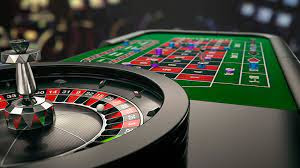Grand Casino Lisboa
Located in an iconic building the casino is known for unparalleled gaming experience spread over four floors with over 240 gaming tables and 750 slot machines. Superior architecture, unique gastronomic experiences, and an interesting gaming environment have helped the Grand Lisboa become a cultural landmark in Macau. Casino Lisboa Review A huge reflective dome and a looming gold tower mark the Grand Lisboa, which is the tallest building in Macau at a staggering 856 feet. The hotel-cum-casino attracts tourists with its spectacular design. A lotus-shaped structure sits at the base of the hotel, surrounding a gigantic reflective dome that lights up with different colours at night. The majestic tower is also decked with lights that light up the night sky and trace the detailing of the building. The Grand Lisboa is unapologetic in its extravagance, and while tourists come to the casino because of the flashing lights and attractive exterior, it’s the experience that truly gets them hook...




Comments
Post a Comment